
Exploring Hokkaidō’s Shiretoko: Hot Waterfalls, Stargazing, and Scenic Drives
Guideto Japan
- English
- 日本語
- 简体字
- 繁體字
- Français
- Español
- العربية
- Русский
5. Furepe Waterfall: Falling Like a Maiden’s Tears
It is a pleasant 20-minute walk from the Shiretoko National Park Nature Center to the Furepe Waterfall, which has an observation deck offering magnificent views of its steep cliff face and the Sea of Okhotsk. As a World Heritage site with easy access, this is a popular spot.
The waterfall is fed by groundwater sourced from rain and snow that falls on the Shiretoko mountain range and seeps into the earth, then escapes from clefts in the 100-meter-high cliff. It has a vertical drop of 60 meters. As the volume of water is low, locals have dubbed this fall the “Maiden’s Tears.”
Related article > Exploring Hokkaidō’s Shiretoko: Lakes, Wild Shorelines, and More
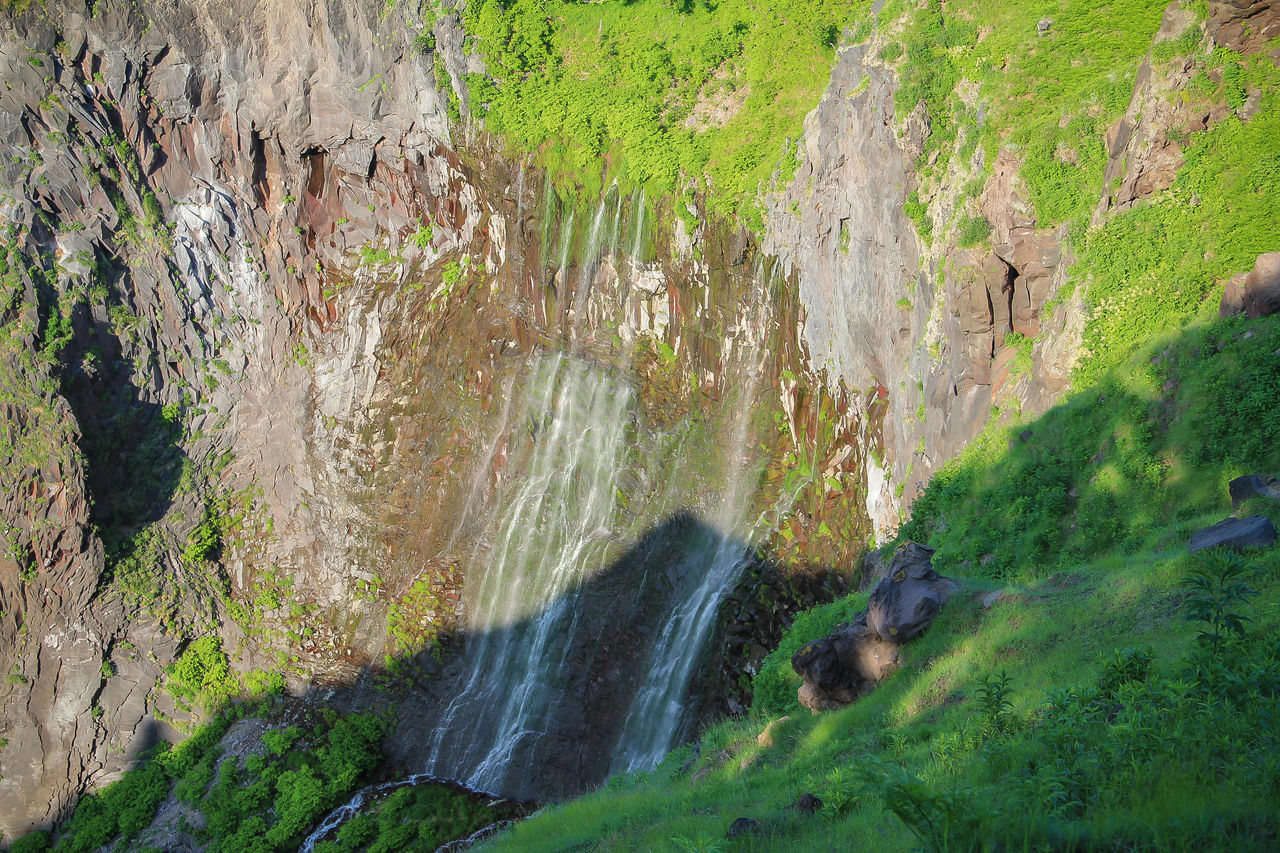 Furepe Waterfall is also known as the “Maiden’s Tears.” (Courtesy of Shiretoko Shari-chō Tourist Association)
Furepe Waterfall is also known as the “Maiden’s Tears.” (Courtesy of Shiretoko Shari-chō Tourist Association)
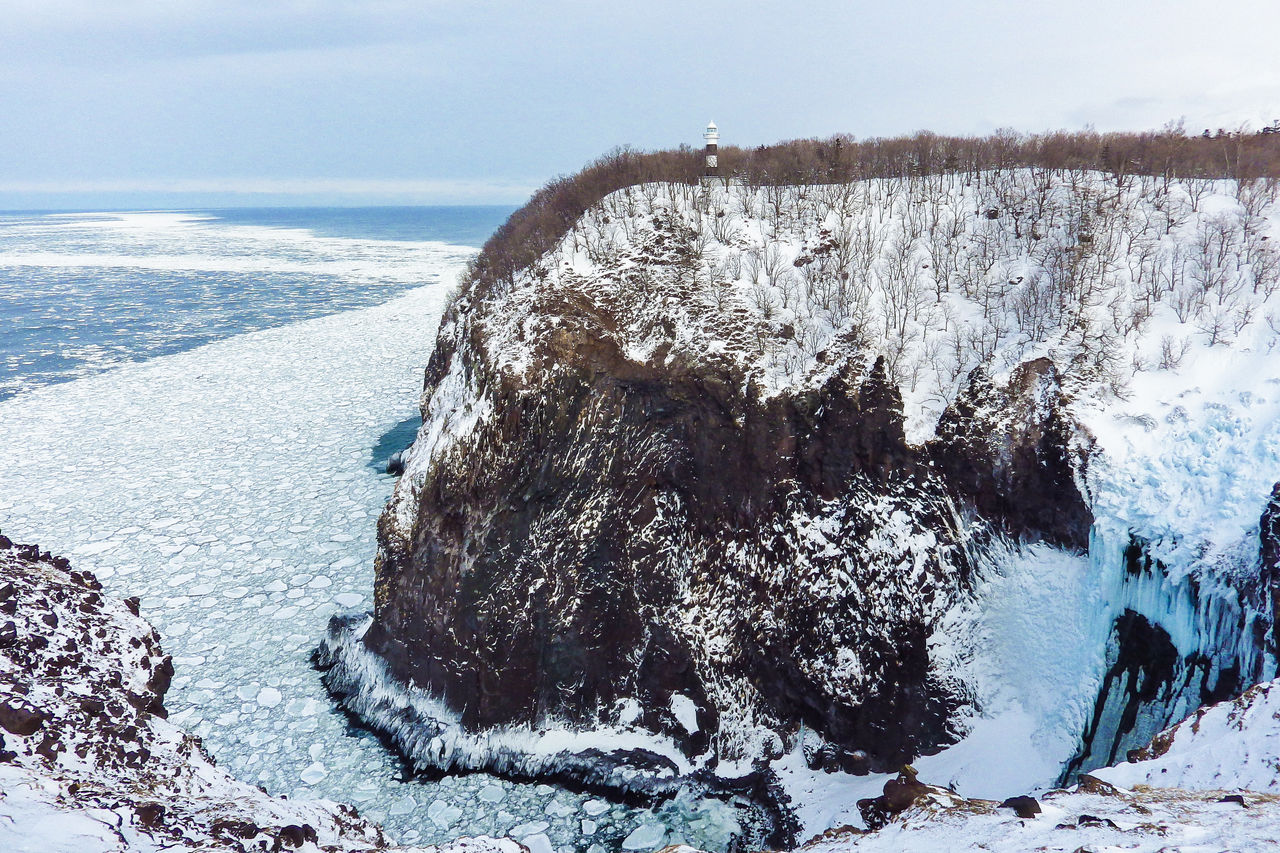 Furepe Waterfall with drift ice pressing close in. (Courtesy of Shiretoko Shari-chō Tourist Association)
Furepe Waterfall with drift ice pressing close in. (Courtesy of Shiretoko Shari-chō Tourist Association)
The waterfall freezes in winter to create a stunning ice sculpture. Groups of Hokkaidō deer are also a common sight along nearby walking trails.
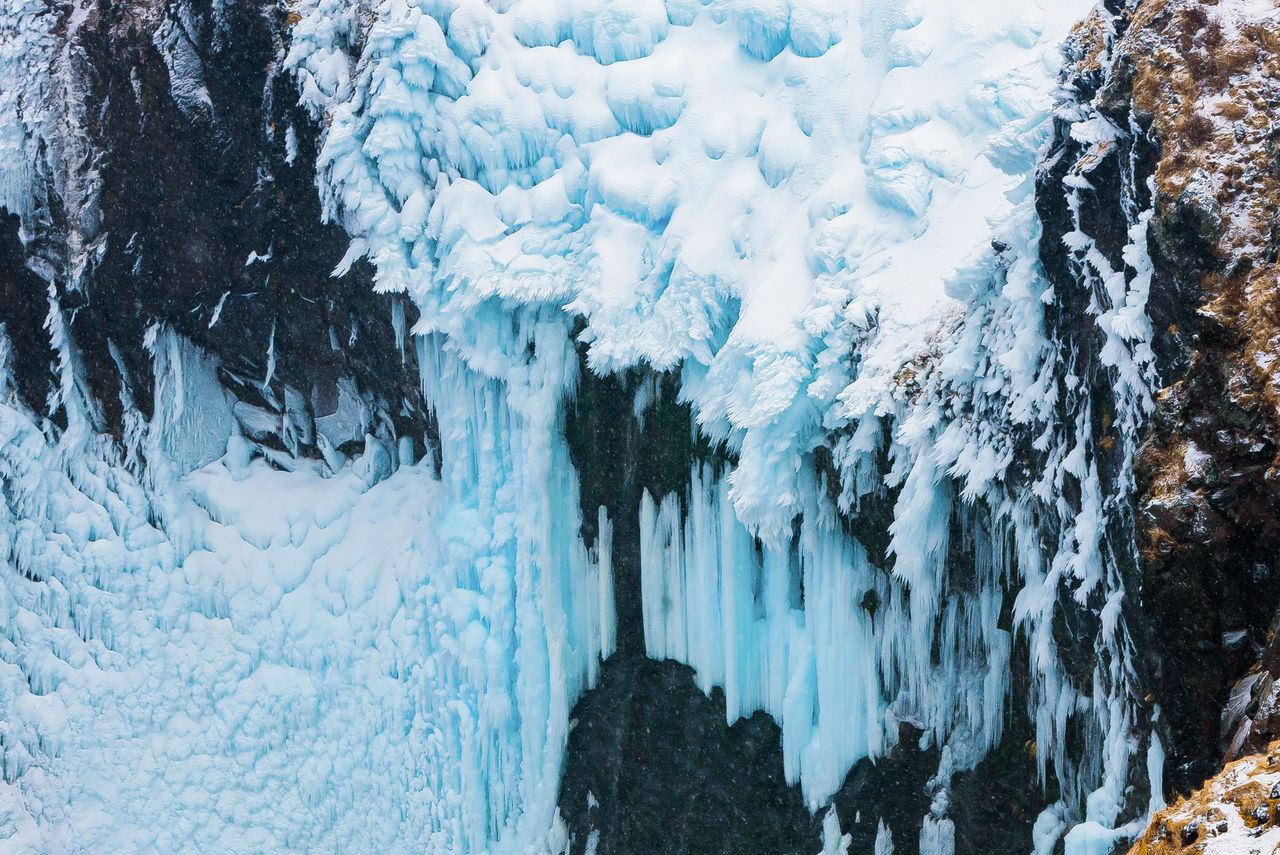 The waterfall frozen midair is a major winter draw.
The waterfall frozen midair is a major winter draw.
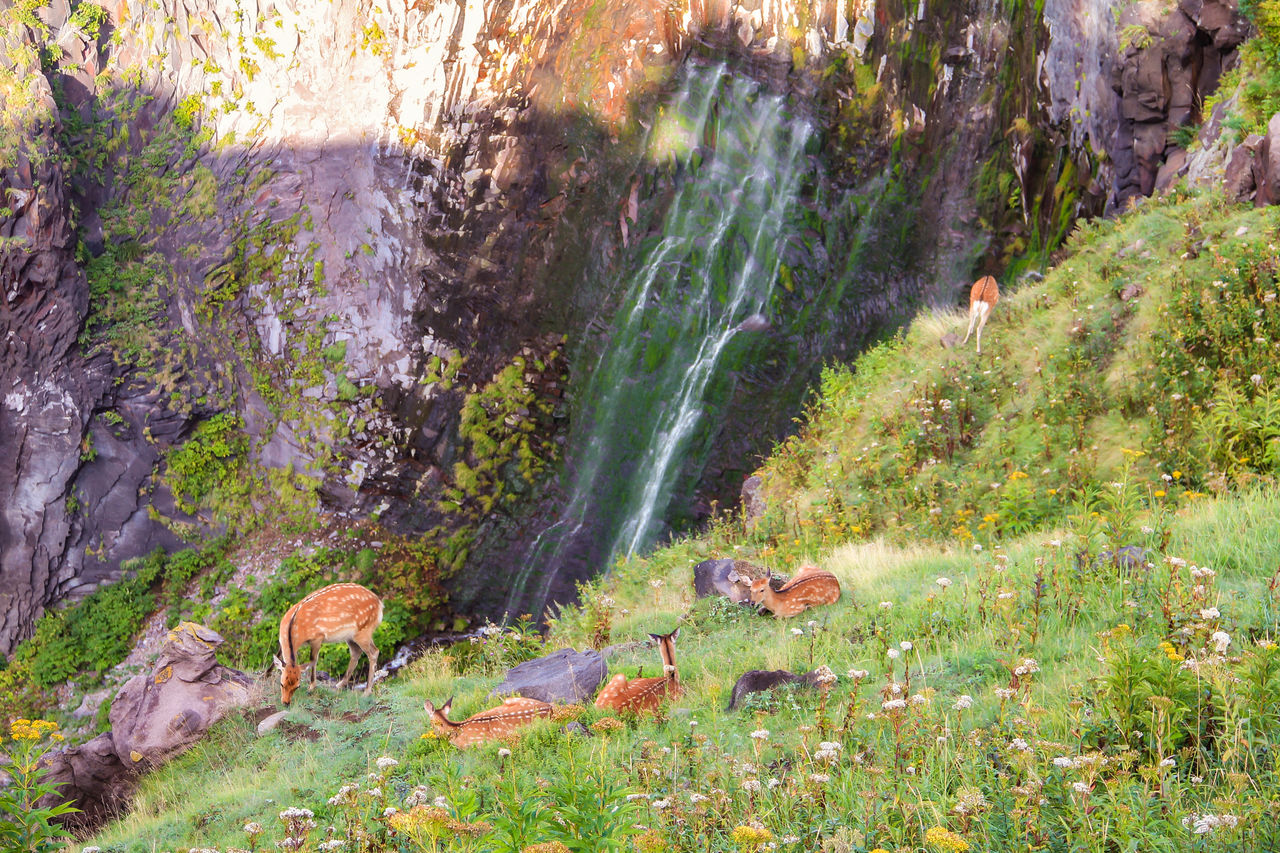 Visitors have a good chance of spotting Hokkaidō deer near Furepe Waterfall. (Courtesy of Shiretoko Shari-chō Tourist Association)
Visitors have a good chance of spotting Hokkaidō deer near Furepe Waterfall. (Courtesy of Shiretoko Shari-chō Tourist Association)
DATA
- Access: 20 min walk from Shiretoko National Park Nature Center
6. Oshinkoshin Waterfall: Twin Beauties in Japan’s Top 100
The Oshinkoshin Waterfall lies along National Highway 334, which links central Shari with Utoro, the regional tourist hub. Given its convenient location and access to parking, Shiretoko visitors often make this waterfall the first stop on their itinerary.
Thirty meters wide and 50 meters high, the fall splits into two streams partway, explaining its other moniker, the “Twin Beauties.” For a more dynamic experience of the tumbling water, you can also climb steps alongside the fall. As they do not freeze in winter, you can enjoy the Oshinkoshin cascades all-year long. Oshinkoshin is ranked as one of the top 100 waterfalls in Japan.
 The Oshinkoshin fall splits into two cascading streams. (Courtesy of Shiretoko Shari-chō Tourist Association)
The Oshinkoshin fall splits into two cascading streams. (Courtesy of Shiretoko Shari-chō Tourist Association)
 It continues to flow without freezing in winter.
It continues to flow without freezing in winter.
(Courtesy of Shiretoko Shari-chō Tourist Association)
The name “Oshinkoshin” comes from an Ainu phrase meaning a “place where Ezo spruce grow in clusters.” If you continue on the former national highway away from the waterfall, a little way on you will find an observation deck that offers superb views of the Sea of Okhotsk.
 A field near the Oshinkoshin Observation Deck.
A field near the Oshinkoshin Observation Deck.
DATA
- Access: 10 min by bus from Utoro Onsen Bus Terminal; 40 min by bus from JR Shiretoko Shari station
7. Kamuiwakka Hot Falls: Shiretoko’s Hidden Hot Spring Gem
The Kamuiwakka Hot Falls are an extension of the Kamuiwakka River, which flows down from Mount Iō. A natural hot spring feeds into the river, turning its water into a fast-flowing onsen. Walk upstream to the waterfall basin for a hot spring bath in the wild.
Kamuiwakka has four numbered falls starting from the river’s lower reaches. The water temperature rises as you climb, but entry past the first waterfall is now prohibited due to the danger of falling rocks. The first fall’s water is only around 30 degrees Celsius, so is not quite up to usual onsen levels.
The falls are quite slippery, so shoes appropriate for river walking—and ample care—are called for. The spring water is also highly acidic and may irritate the skin.
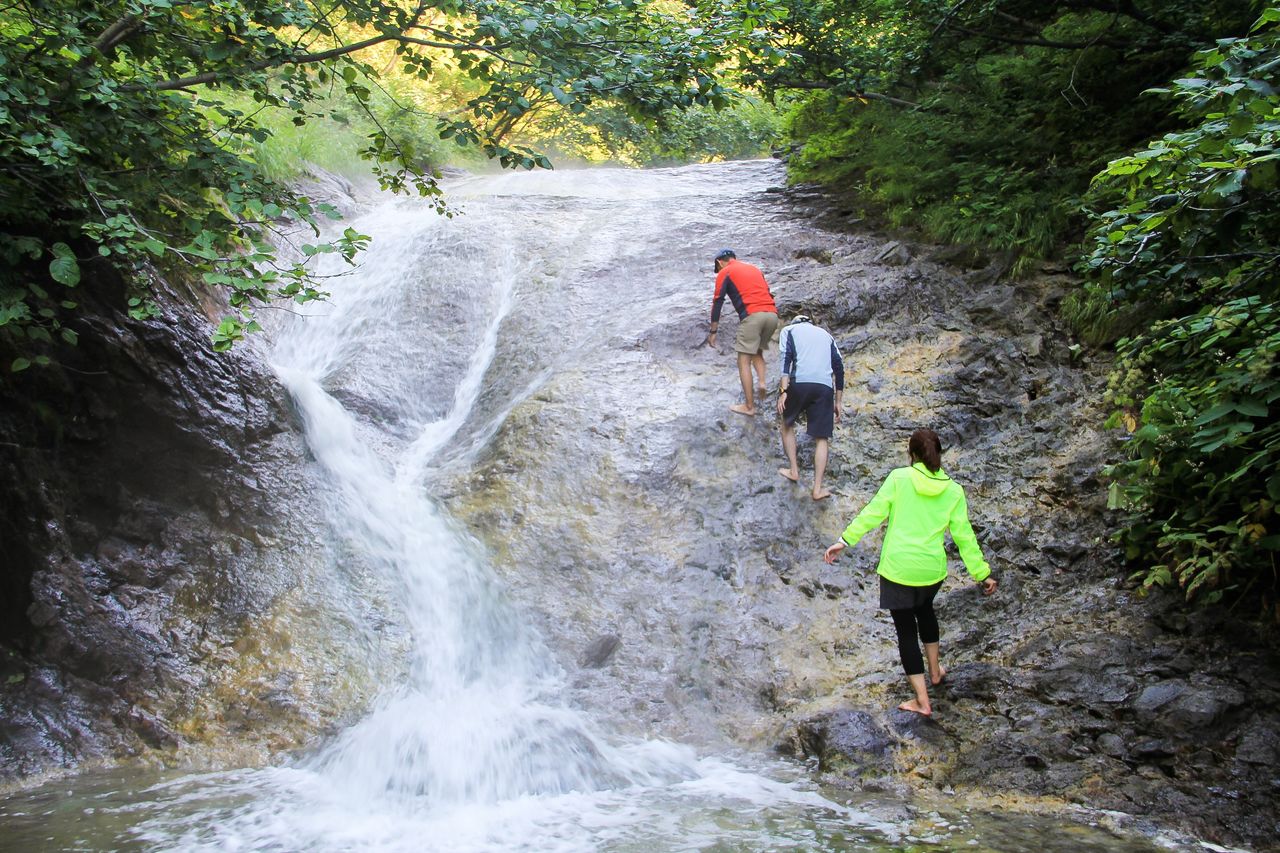 It is still possible to climb up one waterfall. (Courtesy of Shiretoko Shari-chō Tourist Association)
It is still possible to climb up one waterfall. (Courtesy of Shiretoko Shari-chō Tourist Association)
Further downstream where the Kamuiwakka River joins the Sea of Okhotsk is the Kamuiwakka Waterfall. Although easily confused with the river’s hot falls, this one lacks most of the heat of the springs farther upstream. It is not accessible by land, and is best viewed from a tour boat.
 The Kamuiwakka Waterfall as seen from the water. (Courtesy of Shiretoko Shari-chō Tourist Association)
The Kamuiwakka Waterfall as seen from the water. (Courtesy of Shiretoko Shari-chō Tourist Association)
DATA
- Access: 24 km (40 min drive) from Utoro; shuttle buses run during the period when private vehicle access is prohibited (usually August)
8. Shiretoko Pass: Breathtaking Sunrises and Starry Skies
The 738-meter-high Shiretoko Pass lies along the Shiretoko Highway connecting Shari and Rausu. Opened in 1980, the highway is the only road linking the east and west coasts of the peninsula. It affords excellent, close-up views of Mount Rausu—which still has snow through July—and is a popular route for a scenic drive.
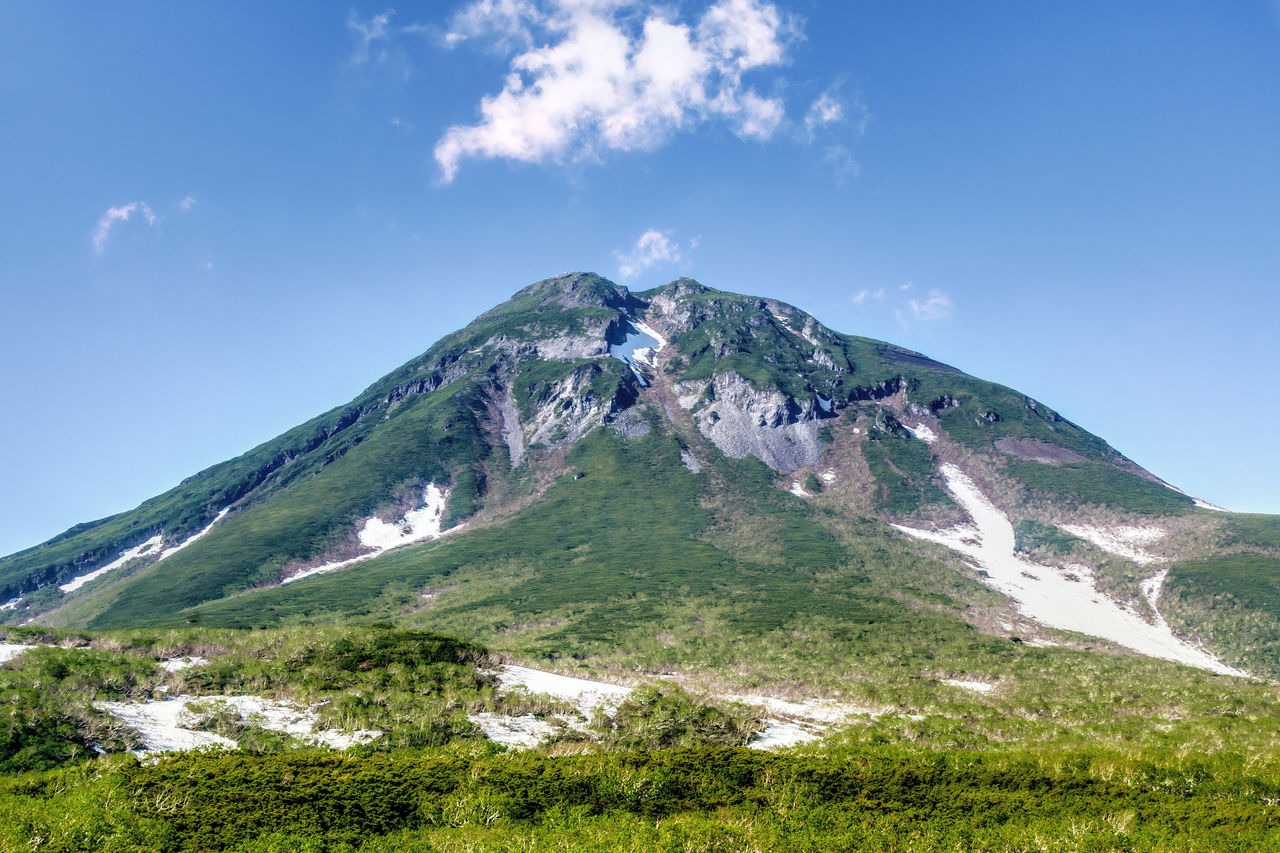 Mount Rausu in June, still showing unmelted snow.
Mount Rausu in June, still showing unmelted snow.
The highway is closed from around early November to late April due to the increased risk of landslides and avalanches arising from the highly changeable weather. It has the shortest open season of any national road in Japan, and requires over one month of plowing before it reopens each spring.
 Snowplowing on the Shiretoko Pass. (Courtesy of Shiretoko Shari-chō Tourist Association)
Snowplowing on the Shiretoko Pass. (Courtesy of Shiretoko Shari-chō Tourist Association)
Although often shrouded in mist, on clear days the pass offers views of Mount Rausu, dense stone pine forest, and Kunashiri Island to the east. There are magnificent sunrises and seas of clouds, not to mention superb foliage in fall. The pass is also gaining a reputation as one of Hokkaidō’s top stargazing spots. Its pitch-dark night sky, thanks to the absence of nearby light pollution, is filled with a seemingly infinite array of stars stretching as far as the eye can see—providing nature’s own planetarium.
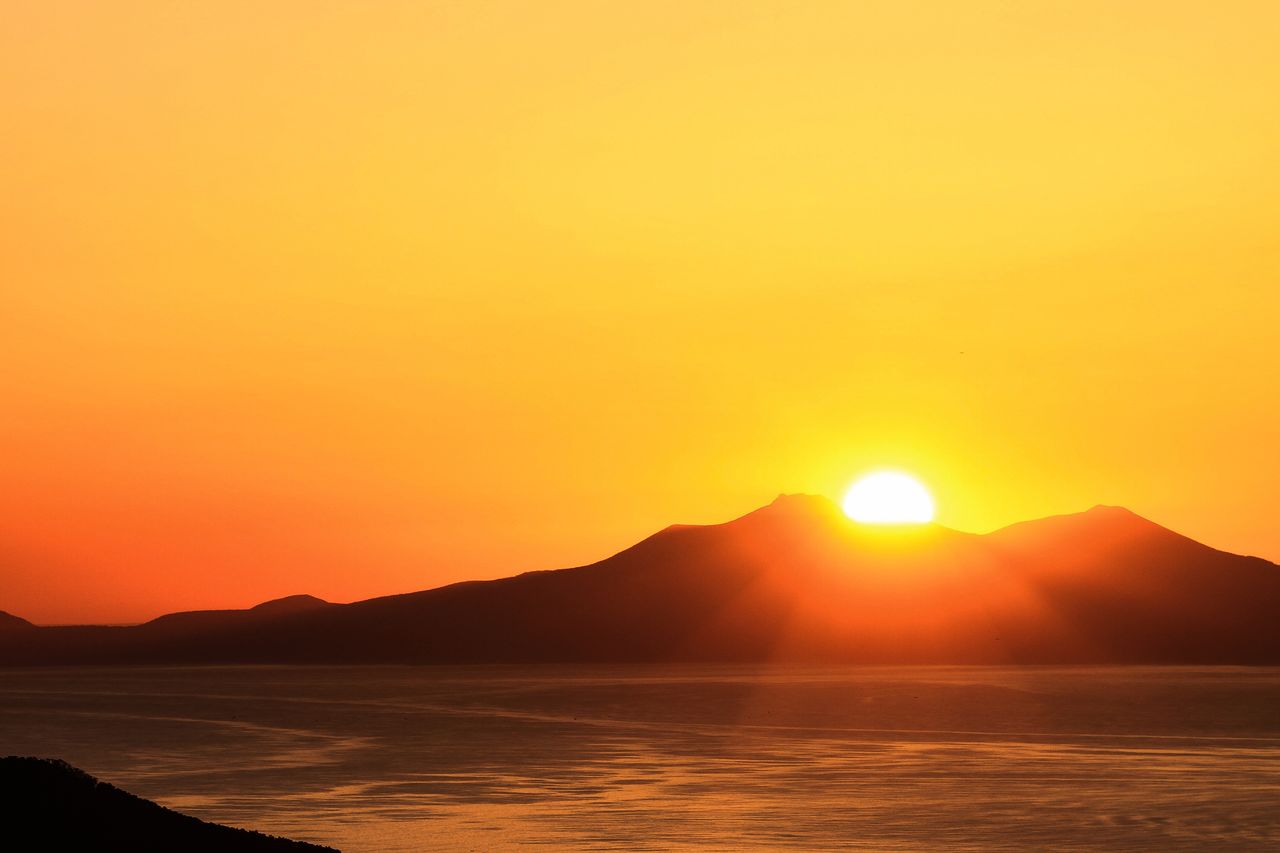 The morning sun rising over Kunashiri Island. (Courtesy of Shiretoko Shari-chō Tourist Association)
The morning sun rising over Kunashiri Island. (Courtesy of Shiretoko Shari-chō Tourist Association)
 The fall foliage is a highlight. (Courtesy of Shiretoko Shari-chō Tourist Association)
The fall foliage is a highlight. (Courtesy of Shiretoko Shari-chō Tourist Association)
DATA
- Access: 15 km (25 min drive) from Utoro; 25 min by bus from Utoro Onsen Bus Terminal
- Open: Around late April to early November
(Originally written in Japanese. Banner photo: Hokkaidō deer are frequently spotted near Furepe Waterfall. Reporting and text by Laufen Katsu. Photos © Shiretoko Shari-chō Tourist Association and Laufen Katsu.)
